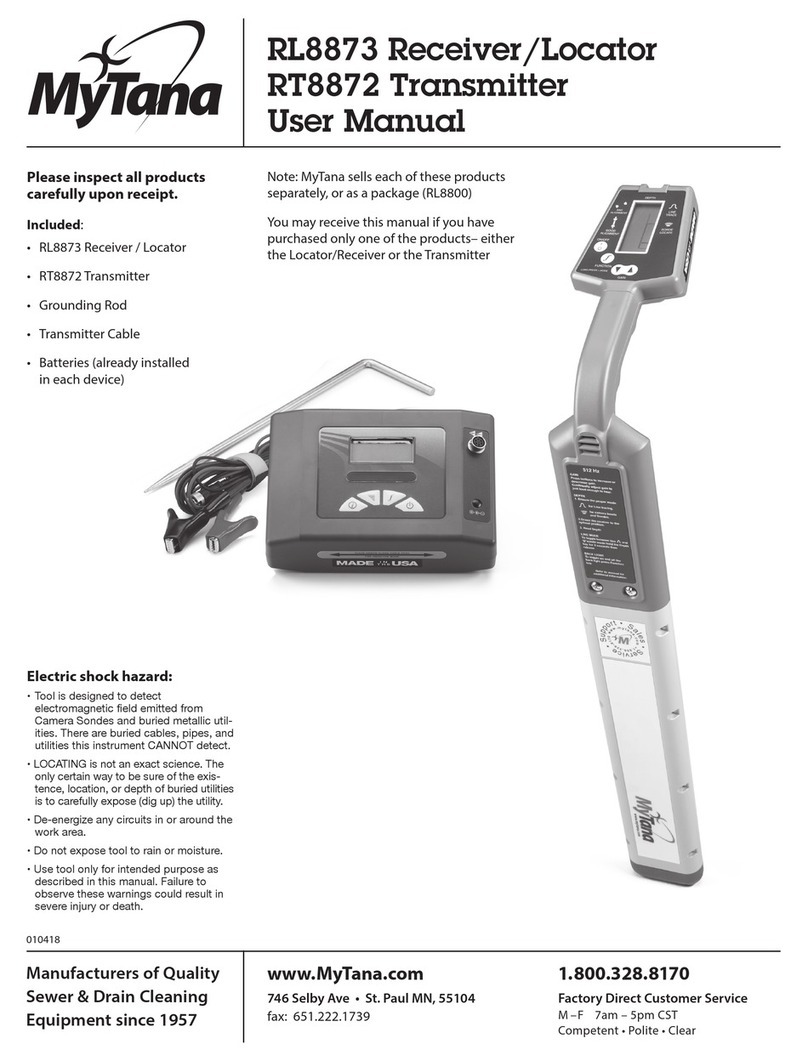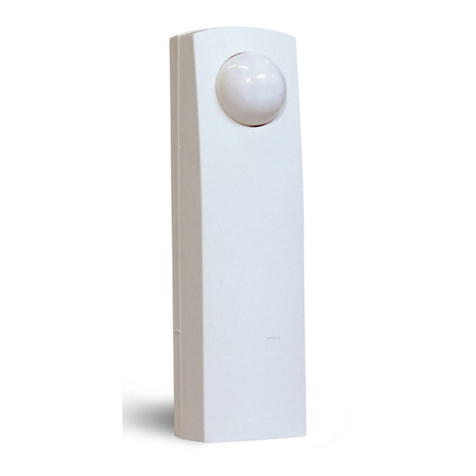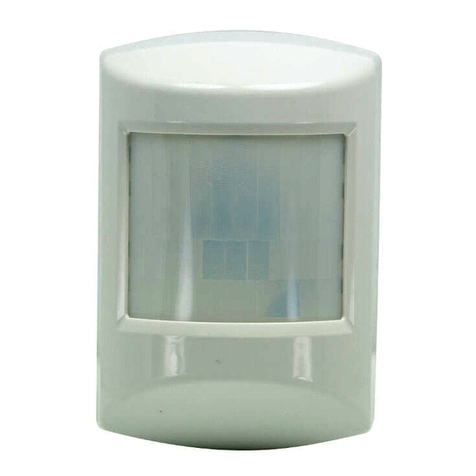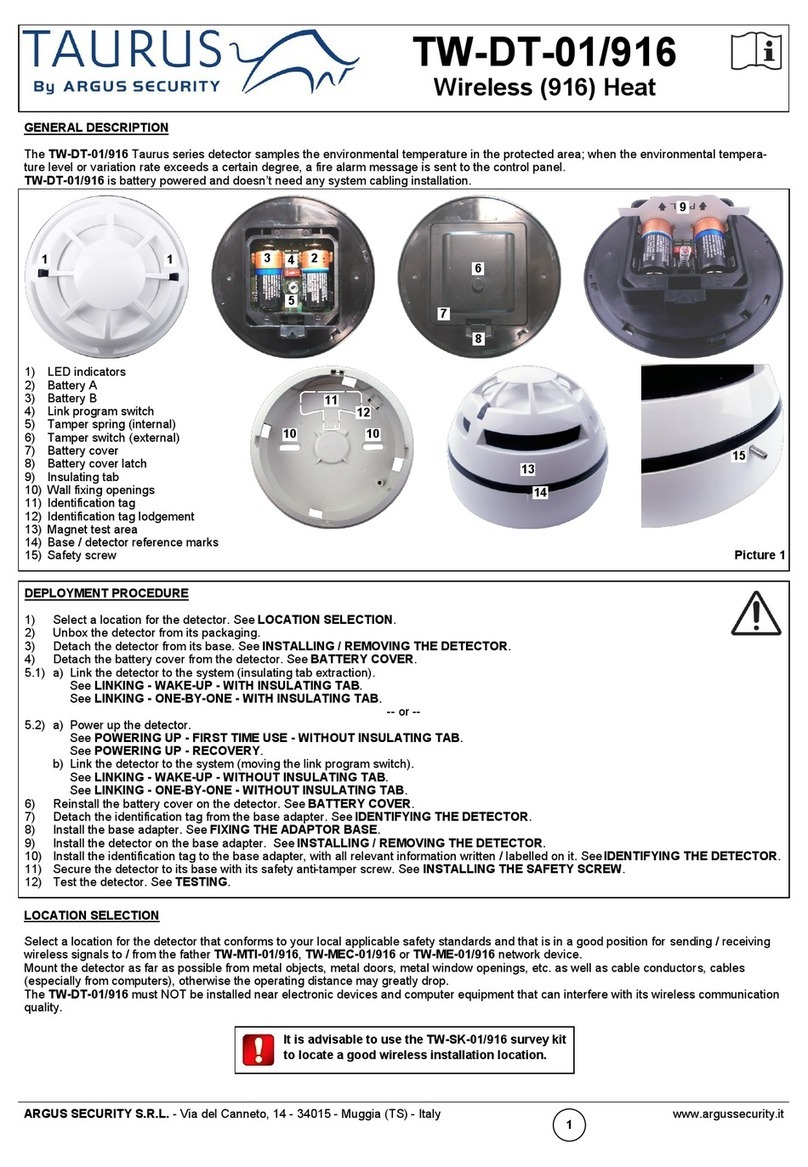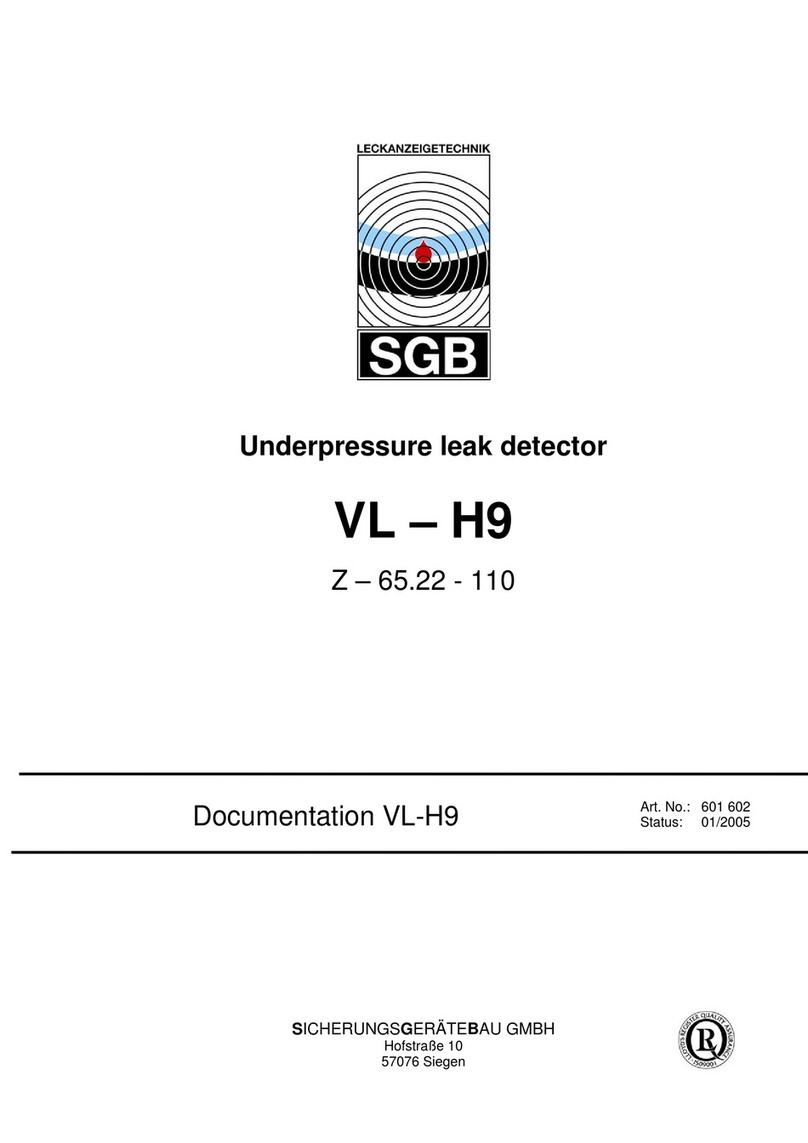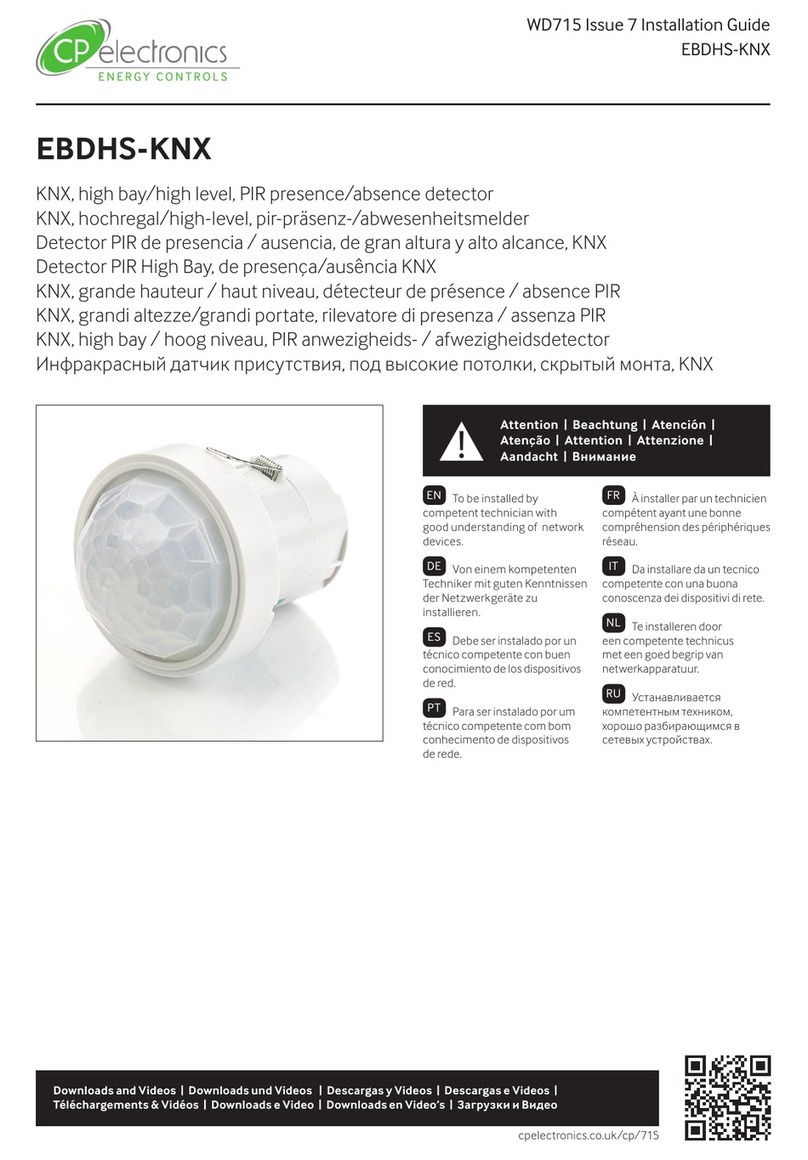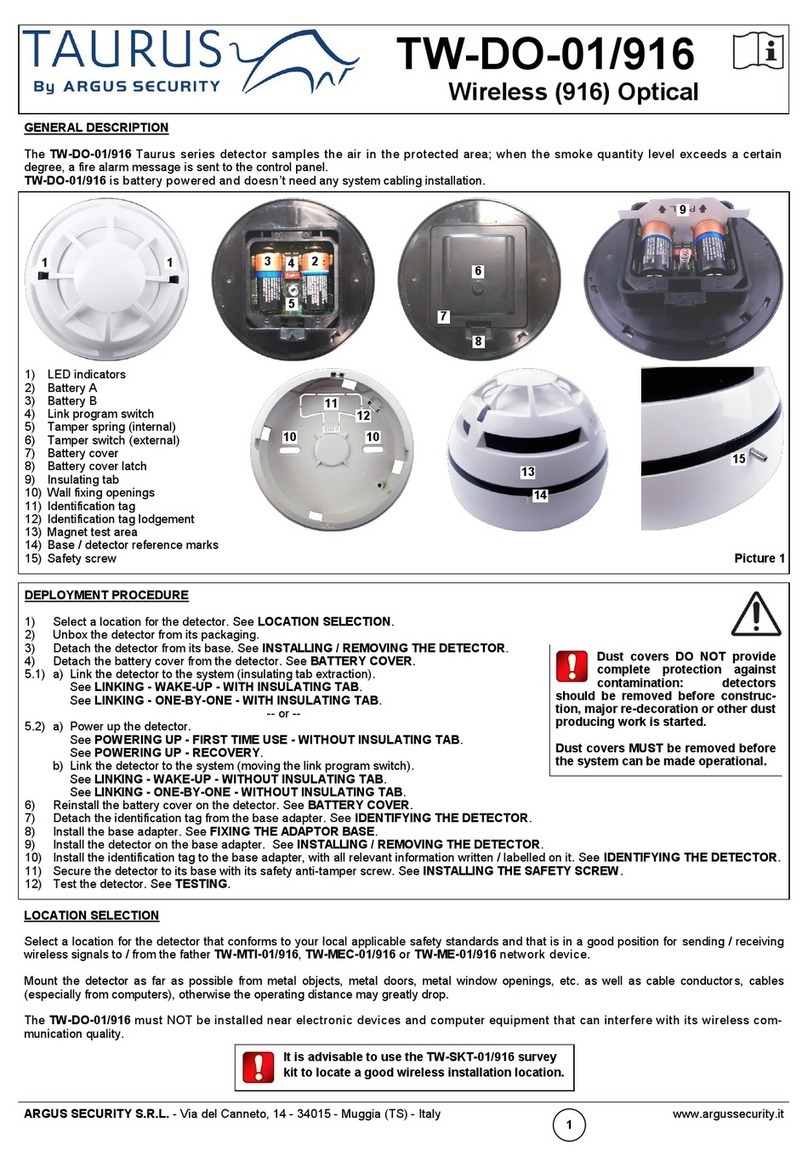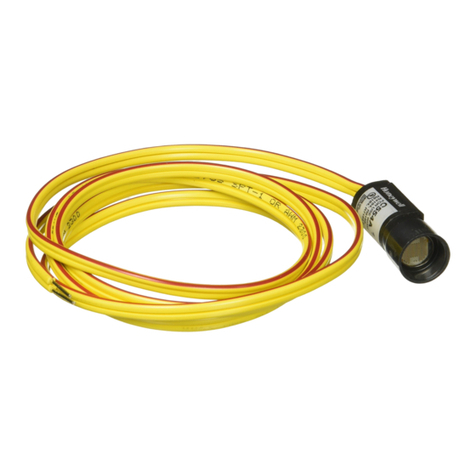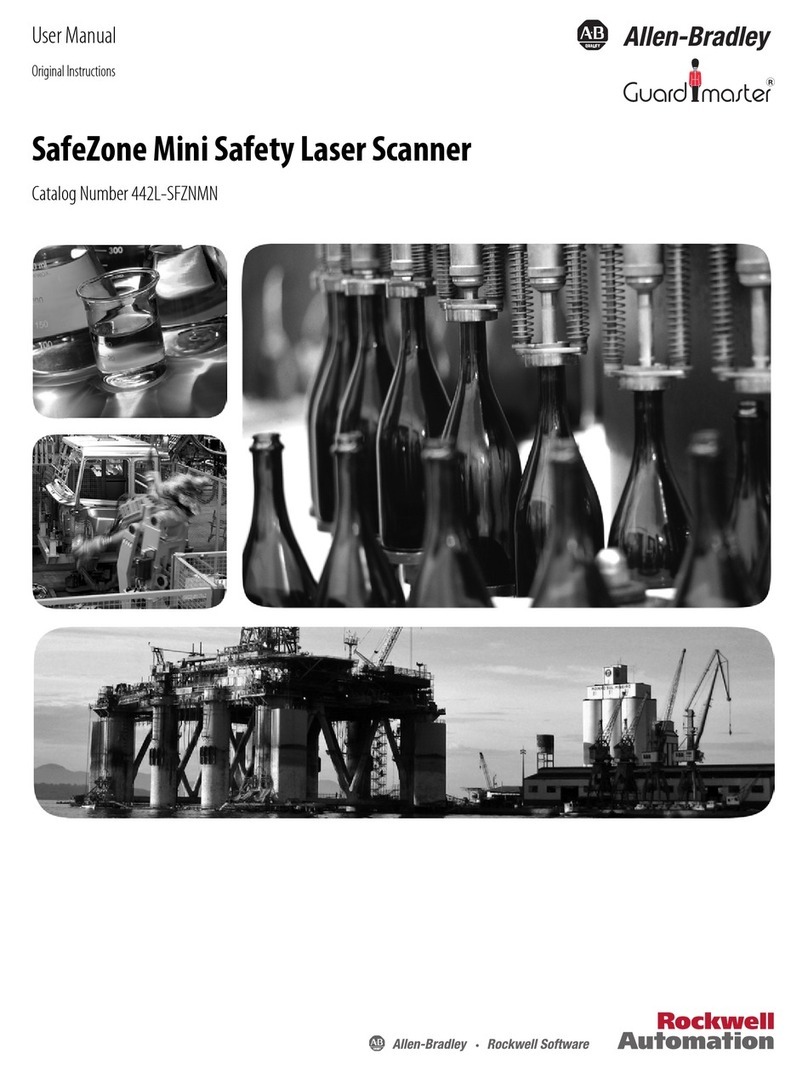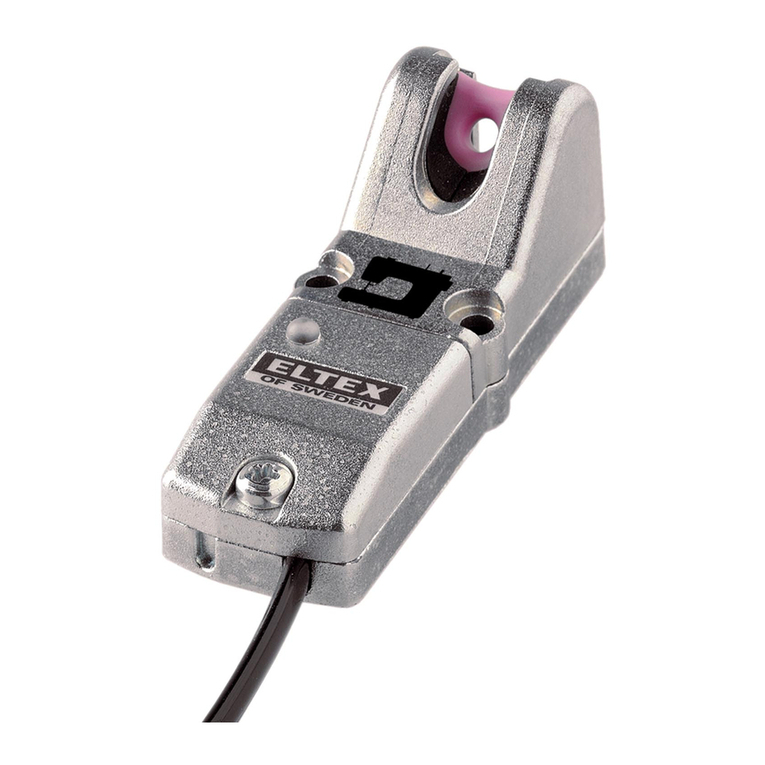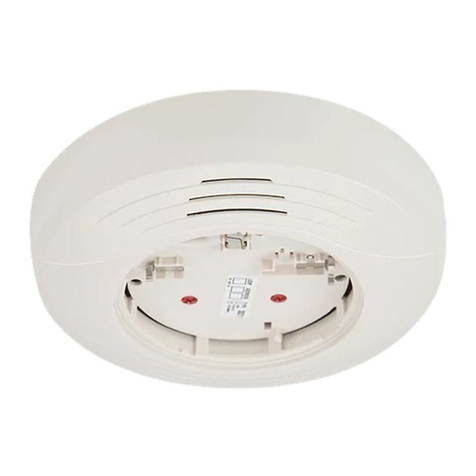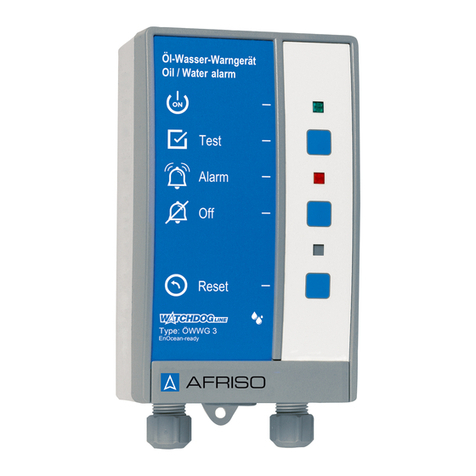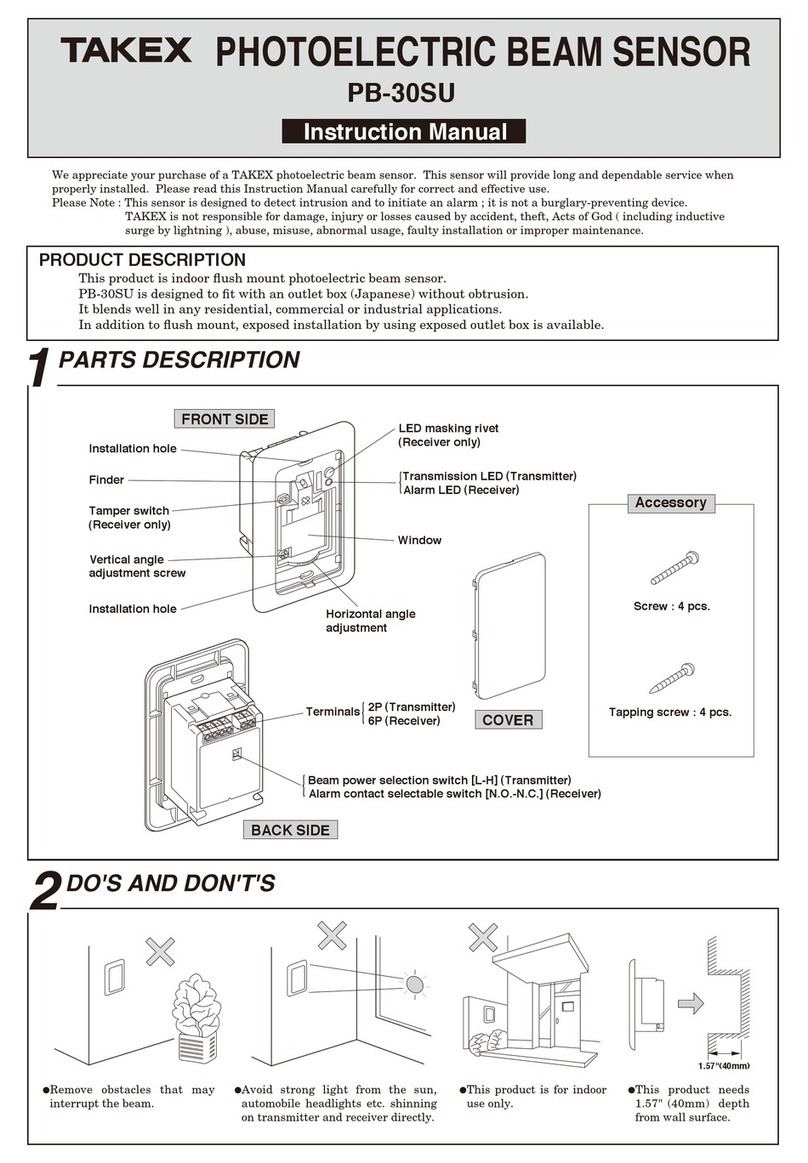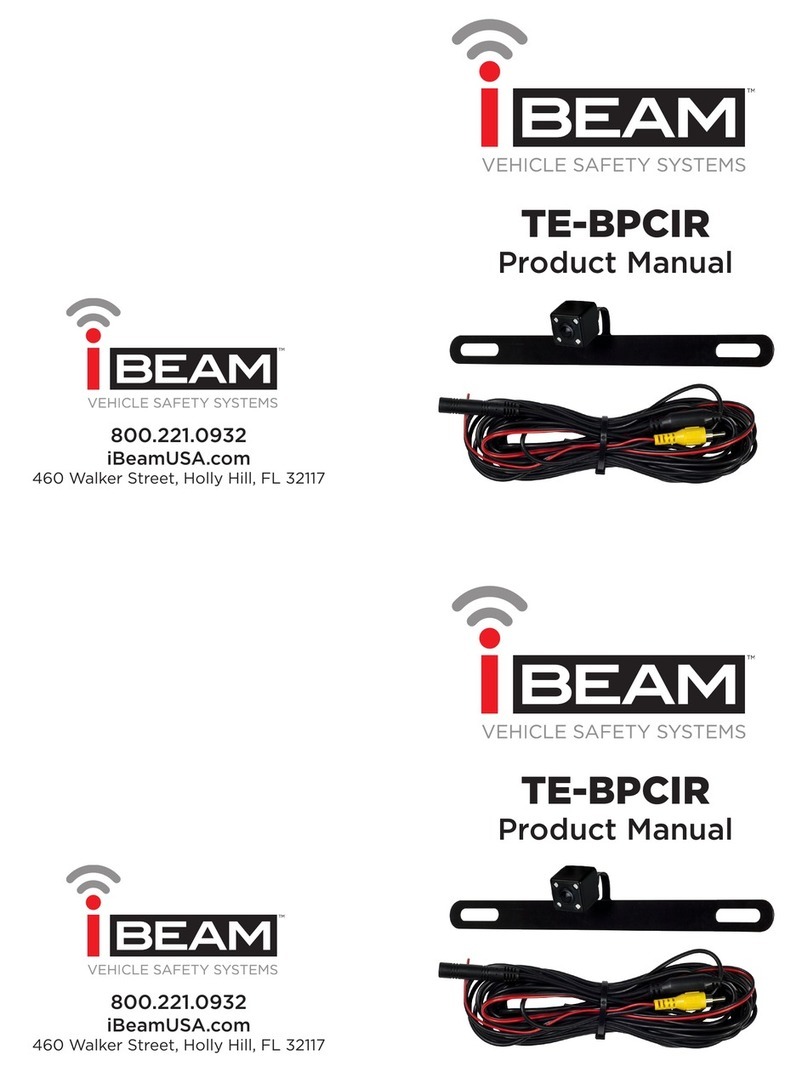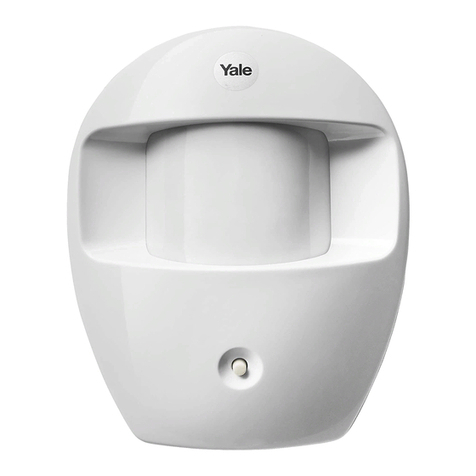MyTana LD40 User manual

Manufacturers of Quality
Sewer & Drain Cleaning
Equipment since 1957
1.800.328.8170
Factory Direct Customer Service
M –F 7am – 5pm CST
Competent • Polite • Clear
www.MyTana.com
746 Selby Ave • St. Paul MN, 55104
fax: 651.222.1739
LD40 User Manual
082919
Introduction
Using technology originally developed for the nuclear power industry, the LD40 has
been modied specically to pick-up acoustic signals and frequencies commonly
encountered in plumbing, water and sewer applications.
The acoustic signal characteristics of leaks vary considerably from one leak to
another, even when the leaks have similar water pressure and water leak rate. In
some cases, it will be denitely known that there is a leak in a segment of pipe but
there will be no visible indication of the specic area of the leak.
Since leaks have a variety of sounds, it is strongly recommended you
• Practice with the LD40 on known leaks to gain an understanding of how the
unit processes those sounds.
• Do an initial mapping of the search area for a leak-type signal. After initial
detection of a leak signal, use the other frequency bands to nd the best signal
with the least interference from environmental background noise.
Inspect your system carefully upon receipt.
Let us know right away of any damage you note.
Headphones
with
connecting
cord
Carrying Case
Sensor connection
cord
Sensor or
extension
handle
4 sensor tips –
use on variable
surfaces
Sensor probe
extension
Display/Digital
Response Meter –
5 Frequency bands,
GAIN control
mute switch
Sensor –
a low-noise amplifier
which outputs sound
signal to both meter
and headphones.
Sensor
handle
extensions
Recharging
cable and
connector
Experience leads to a skill level
where leak location specialists
are able to identify leaks by their
acoustic noise “signature”. Even
experienced personnel are contin-
ually increasing their skill level and
improving their techniques.

PG 2 MYTANA LD40 USER MANUAL
Set Up
1. Connect the sensor cable to the jack on
the top of the sensor (line up notches),
then to the jack on top of the display
2. Plug the head phones into the jack on
the bottom of the display.
3. Connect the handle, extensions or probe –
2 congurations (shown left):
Figure 1 is used mostly for detection on generally at
surfaces, indoors or outdoors. Listen for leaks using one
of the 4 dierent sensor tips that gives you the best but
smallest contact with the surface.
• there are 2 points ideal for use with carpeting, depending on
it’s thickness. You must be able to poke all the way through
the carpet and pad to the suboor.
Figure 2 lets you listen for leaks using the
probe extension:
• listen while the probe is pushed against a surface listening for leaks within walls
• localization of the area where the leak exists by listening on faucets,
hose bibs, angle stops or wall surfaces
• penetrating into the earth to contact the pipe and listen for
the presence of leaks
To recharge the battery–
Connect the magnetic end of the
charging cord to the top of the
display, the USB end to
the charging port and
plug in to wall socket.
Other equipment you may need:
A pipe locator capable of locating
metal water pipes under concrete
slabs, pavement and earth, such
our RL8873 and RT8872.
You can reduce the search time by
verifying pipe location with the
use of a Locating system.
Unfortunately, there is no good
way to locate plastic pipes such as
used in many pool systems piping,
other than inserting a metal sh
tape etc. within the pipe to make
it act like a metal pipe.
Air compressor. The use of
compressed air to stimulate
the leak acoustic signal level is
discussed later.
Figure 1
Connect one of the tips to the
bottom of the sensor.
Add the handle to an extension, then
connect the extensions to the top
of the sensor as shown.
Figure 2
Connect the probe
(and extensions if needed)
to the bottom of the sensor
where the tips normally fit.
Attach the handle directly to
the top of the sensor.
Display Controls
Digital Response Meter:
Reects what the sensor is hearing.
Calibrate every time you switch
frequencies (see steps 3-5 next page)
Power Button The LD40 is powered
by a lithium-ion battery. Battery
charge is indicated in the lower
left corner of the display.
Frequency Band (F-b) :
B = broadband: picks up the
entire range of acoustic frequencies
Bands 1 - 4 = each lters out specic
frequencies: generally the lower bands
(1-3) will give the strongest leak signal but may
also pick up the most outside noise
Gain: Works like a volume control for
the display meter
Headphone mute Be sure to mute the
headphones BEFORE you move the
sensor, to avoid a very loud sound

PG 3 MYTANA LD40 USER MANUAL
Getting Started
1. Switch on and mute the headphones.
2. Set the frequency band to broadband (B) using the button
3. Set the GAIN completely down using the button.
4. Set the sensor on the oor surface to be monitored for leaks. The sensor tip should
be contacting the surface. The tip is the point where the acoustic signal enters the
sensor, similar to the needle on a phonograph.
5. Un-mute the headphones and calibrate the display:
Turn the GAIN up (increases the signal strength to the headphones and display)
to the point that you can begin to hear the background noise (environmental noises
other than the leak noise) present in the oor, and the display meter bounces.
You should now be able to scratch the oor lightly with your ngernail, at a distance
of 2-3 ft from the sensor, and clearly hear the scratch noise. If you cannot hear the
scratch noise, the background noises are probably too high. You will need to
shut down some of the noise (ex. turn o an air conditioner) or return at
another time when there is less environmental noise.
Adjust the Gain until the meter remains approximately in this position.
This lets you know the meter is picking up sound signals, yet allows
room for a spike when it picks up a leak type signal. You are now ready to go!
Leak Area Determination
1. Do steps 1-5 above, placing the sensor in the suspected general location of the leak,
or in any location if no particular oor area is suspected. Be sure to set the frequency
to Broadband.
2. Move the sensor around the area in about 2 ft intervals and keep track of where you
have already monitored (mute the headphones before moving the sensor).
When a change of signal characteristics is heard (such as a hissing sound, radio-
static, frying grease, sizzling bacon or even a hollow sound like a fog horn) move
the sensor in dierent directions to determine which direction the sound is coming
from. If a pipe has been located, move in steps along the pipe line
3. Move in that direction, constantly checking other directions also, until the point on
the oor that gives the maximum signal level is located.
This signal level peak can usually be seen easily on the display and heard on the head-
phones, although sometimes one or the other will give a better indication. Adjust the
GAIN to give a good audible level and to prevent the meter from pegging high.
The dierent frequency bands will detect the leak signals with various degrees
of eectiveness.
After initial detection of a leak broadband, the user should step through bands 1-4 to
determine which band gives the best signal with the least interference from environ-
mental background noise.
Usually the lower the frequencies (bands 1-3) will give the strongest leak signal but may
also pick up the most outside noise. If you are not able to isolate the leak sound, shut o
the sources of the background noise, or return to do testing at a time when less environ-
mental noise is present.
Remember to “calibrate” the display every time you change frequency bands.
As you move the sensor around,
make sure the tip continues to make
good contact with the surface.
Use the belt hook if you need to
move around larger areas

PG 4 MYTANA LD40 USER MANUAL
Indoors
In a building, readings taken on all angle stops, faucets, exposed pipe, hose bibs etc.
will help make a “map” of signal intensity. Often all points will have detectable signal
levels, since the leak sound travels well in metal pipes. However, the highest levels will
usually indicate the local “area” to search on the slab in detail.
With plastic water pipes, the sound does not travel well and the one or two detectable
readings will indicate a nearby location. You may need to use a pipe tracer.
Outdoors
For outdoor leaks, pipe end points are often the only accessible spots and it will be
possible only to tell which end the leak is nearest. Usually, the above ground detection
by the survey sensor will indicate the exact location of the leak. In those cases where
it doesn’t, it will be necessary to gain access to points on the pipe by either boring
holes to the pipe, or digging up direct access holes using a backhoe. Drilling holes is a
popular method of accessing pipes under layers of pavement such as in streets. Direct
pipe access is popular in chemical and petroleum plants where there is minimal pave-
ment and access areas can be roped o for a period of time.
Diculties
In some cases, it will be denitely known that there is a leak in a segment of pipe but
there will be no visible indication of the local area of the leak. Sometimes leaking water
can travel a long way under concrete slabs or pavement before being visible.
Often, particularly in sandy soil, the leak will go down into the water table and never
surface to be visible. In such cases, whether in under-slab or underground piping
systems, it is necessary to take measurements at all accessible pipe locations. You may
need to gain additional access points.
Leak Stimulation
As previously mentioned, several factors such as the leak hole shape, cavity presence
outside the leak hole, etc. can cause a leak sound to vary considerably even when the
leaks have similar water pressure and water leak rate.
And, some leaks may emit much less acoustic energy than others and are thus more
dicult to hear.
Using compressed air to amplify leak sounds
Injecting compressed air into the water causes the acoustic characteristics of the leak to
change drastically with the leak intensity becoming several times higher. This makes any
low intensity leak much easier to detect.
Many leak location specialists will use compressed air only on the dicult-to-hear leaks
while others will use it if they don’t hear a leak sound immediately on arriving at the job.
The compressed air is commonly injected via faucet internal threads, hose bibs and pipe
disconnects. Many specialists will shut the main water supply o, while others believe a
more identiable leak sound is obtained by leaving the source pressure connected.
Increasing water pressure
If you are not able to use compressed air, it may be possible to increase the water pres-
sure and make the leak noise easier to hear. This is easy when the pipe section can be
isolated for a controlled pressure test. This technique is widely used for testing plastic
pool system pipes.
Additional Tips
• If the leak noise is very high
and it is dicult to deter-
mine the exact location, a
piece of wood or brick etc.
can be placed between the
sensor and the oor surface
to reduce the level of sound
that is received by the sensor
and thus give a better peak
reading.
• Schedule leak detection at the
quietest time of the day. This
may not be most convenient
for you, but it increases your
chance of successfully locating
the leak by a wide margin.
• Remember to remove hands
from sensors. When using the
point probe, be sure to hold
onto the handle and not the
sensor.
1.800.328.8170
fax: 651.222.1739
www.MyTana.com
746 Selby Ave
St. Paul MN, 55104
Other MyTana Security Sensor manuals
